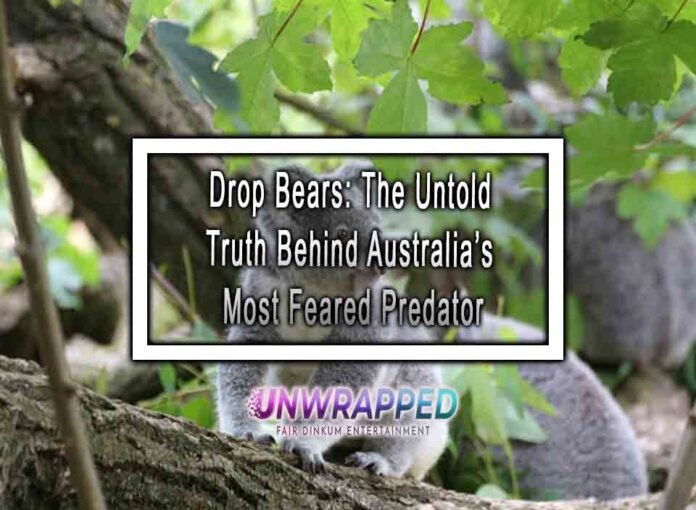Australia is a land of breathtaking landscapes, unique wildlife, and… terror-inducing drop bears! You’ve heard the whispers. Maybe even seen the warning signs. But how much do you really know about these elusive creatures? In this satirical exposé, we’ll dive into the origins of the drop bear myth, share (fabricated but highly convincing) encounters, explore “scientific studies,” and arm you with foolproof survival tips to stay safe in the Outback.
What Are Drop Bears? A Brief Overview
Drop bears (Thylarctos plummetus) are said to be a carnivorous, tree-dwelling cousin of the koala. Unlike their cuddly relatives, drop bears are described as ferocious predators that ambush their prey by dropping from treetops onto unsuspecting victims. Tourists, beware: these creatures are rumored to have a particular fondness for foreigners.
Their distinguishing features include razor-sharp claws, glowing eyes, and a blood-curdling growl that echoes through the eucalyptus forests. If that doesn’t send shivers down your spine, their alleged ability to leap between treetops might.
The History and Origins of the Drop Bear Myth
The drop bear legend dates back to early Australian settler tales, where weary pioneers spun stories around campfires to scare newcomers. Indigenous Australians are notably absent from the perpetuation of this myth, which should be your first clue that it’s all in good fun.
Over time, the myth became a rite of passage for locals to prank tourists. From warning them to wear forks in their hair (to “deter attacks”) to insisting on smearing Vegemite behind their ears, Australians have turned this fabricated predator into a cultural inside joke.
Scientific Studies That Totally Prove They Exist
In 2004, the “Australian Museum of Cryptozoology” (read: a couple of blokes with lab coats and a sense of humor) published a study claiming drop bears are real. Their research involved:
- “Plaster casts” of claw marks (suspiciously similar to a wombat’s).
- Hair samples that “didn’t match any known species” (read: their dog).
- Eye-witness accounts from “reliable” sources (aka, the local pub).
In a completely unrelated and equally dubious study, drop bear attacks were shown to increase when tourists carried umbrellas—clearly viewed as a sign of weakness by the cunning predators.
Terrifying Encounters: Tales from the Bush
Steve from Wisconsin’s Brush with Death
“I was walking through the rainforest when I felt this heavy thud on my back. I screamed, thinking it was a drop bear, but it turned out to be a backpack full of snacks I’d forgotten about. Still, it could’ve been a drop bear.”
Local Legend: The Great Drop Bear Siege of 1983
An entire campsite reportedly fled in terror after hearing growling noises in the night. While later attributed to a koala with indigestion, the incident remains a cautionary tale for those brave enough to camp under the stars.
How to Survive a Drop Bear Attack
Preparedness is key when navigating drop bear territory. Follow these foolproof survival tips:
- Vegemite Smear: A thin layer behind the ears is said to repel drop bears (and most humans).
- Hair Protection: Wear a helmet or balance forks in your hair—drop bears allegedly avoid reflective surfaces.
- Speak in an Australian Accent: Reports suggest drop bears target tourists, so blend in by mastering phrases like “G’day, mate!”
- Stay Indoors: The safest option is to simply avoid the bush altogether.
If all else fails, scream loudly and flail your arms—it won’t scare the drop bear, but it might attract actual help.
The Real Purpose Behind the Drop Bear Legend
At its core, the drop bear myth serves as a quintessentially Australian blend of humor and hospitality. By scaring the daylights out of visitors, Aussies forge unforgettable memories while showcasing their unique sense of humor.
But the myth also acts as a cultural icebreaker. It’s a story that unites Australians and tourists alike in shared laughter—and perhaps a smidge of paranoia.
Conclusion
So, are drop bears real? The short answer: absolutely not. But does that make the myth any less enjoyable? Definitely not. Whether you’re visiting Australia or just having a laugh at the local lore, remember that the drop bear is less of a predator and more of a cultural mascot for Aussie mischief.
Now that you know the untold truth, you can confidently face the Outback… armed with Vegemite, forks, and a great story to share.
Disclaimer: No drop bears were harmed in the making of this article. Or discovered. Because they don’t exist.
See Also: Are Emus Planning a Second War? What We Learned from 1932










